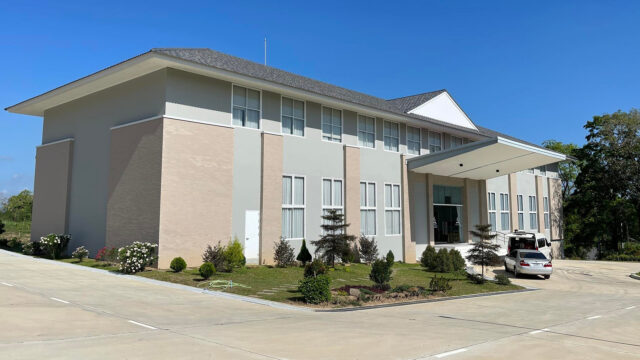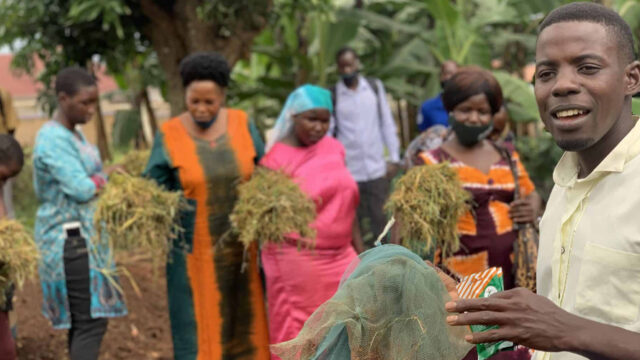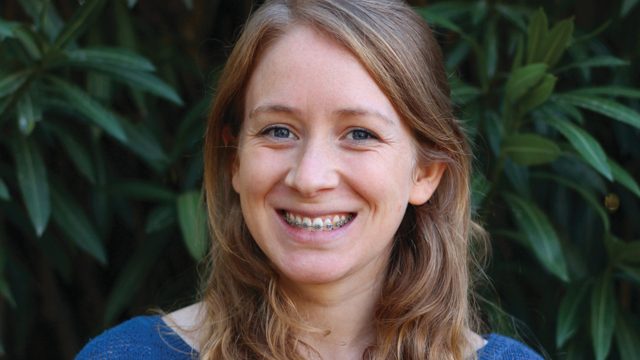Adventist Possibility Ministries in action

Just after graduation in 2005 my wife, a friend of ours, and I decided to attempt a cycling event that was being held right where we lived in Chattanooga, Tennessee, USA. It was called the “Three State Three Mountain Challenge” because one of the routes was a 100-mile ride from Tennessee down to Alabama, over to Georgia, back up to Tennessee, and over three mountains. As I came down off of one of those mountains, I was going around a corner and . . . blank. I was told I hit a car that was coming up the mountain. I do not remember this or anything else about the accident. The next three riders were all medical professionals, and they knew right away how to help keep me alive. As a result of the accident, however, I was paralyzed from the waist down, making me a paraplegic for the rest of my life. I have used a wheelchair ever since. Using a wheelchair to get around presents its challenges, but also its opportunities.
Possibilities in Zambia
I have had the incredible privilege of being a member of the Adventist Possibility Ministries (APM) Physical/Mobility Health and Wellness Task Force. APM is an initiative of the Seventh-day Adventist Church to minister to groups of people who get left out at times. It has grown into a seven-part ministry that focuses on those who have experienced spousal loss, those who are blind or have low vision, caregivers, the deaf and hard of hearing, orphans and vulnerable children, those with physical/mobility health challenges, and those with mental health challenges. Despite our challenges, APM promotes wholeness in our brokenness.
When I was younger, I spent a few months in Africa, and for years I have tried to get back there to share this part of my childhood experience with my wife. You can imagine my excitement when she was offered the opportunity to attend a conference at the Adventist University of Africa in Kenya! Shortly after she received her invitation, we had the opportunity to connect with the General Conference APM director and become ambassadors for APM while on our trip. While I was busy making big plans to travel all over Africa and show my wife the places I had lived, God, in His infinite wisdom, redirected our trip and arranged for us to have more time in Zambia.
In Zambia our dear hosts Vera and Coster planned a courtesy visit to the Southern Zambia Union Conference office in Lusaka. At the union offices we randomly crossed paths with the union APM director before we were scheduled to begin our APM ambassador activities (though nothing in God’s plans is random). That same day, the APM director learned how I use my transfer board to get in and out of a car, and excitedly drove us to meet the director of a nongovernmental organization that advocates for the needs of people with disabilities for the entire country of Zambia. These two had been working together to better serve people with disabilities.
Given that the day’s visit was supposed to be short, the union director requested that we avail ourselves to train the hundreds of APM leaders and members in the Southern Zambia Union before leaving the country. The exciting realization began growing on me that the Adventists in this union and in the country of Zambia had so many initiatives to help those in need!
When the day of the training came, we shared a presentation with practical resources based on what existed locally, and an introduction to APM resources online. I remember being impressed by how accessible the church was where we gathered. I noticed how the members and leaders were intentionally making adaptations that worked for me and other attendees with wheelchairs, those who were deaf or hard of hearing, and those who were blind. The diversity in that space was amazing! Everyone was eager to help, and although I could make it to most places pushing around on my own, they loved to help me with this, too.
One of the most memorable experiences that really touched my heart occurred when a choir of children, all dressed in uniforms with the APM and Adventist Deaf Ministries logo on their shirts and dresses, stood up to sing. As the music played, they began to sign the songs to us, with their choir director proudly leading them. It was clear that God’s angels were right there with them, singing and signing along. Had you been there, I am sure you would have been getting goosebumps, a lump in your throat, and tears in your eyes, just as we were.
The Parable of Two Churches
Once upon a time there were two churches. Both congregations met and got to know a person who used a wheelchair. One church was very large and had a beautiful building, but it had an old unreliable elevator that was constantly breaking down. It also had wooden pews that did not allow for a wheelchair user to sit comfortably next to their family or friends. The other church was small and was renting a building for its worship services. Eventually the members of the small church purchased land and began constructing their own building.
When the members of the large church learned about the difficulties the elevator and the pews were causing the person in the wheelchair, they began renovations, without asking the wheelchair user what they needed. As part of their renovations, they eventually put in a new elevator and made cutouts in the pews with required locations for people who use wheelchairs to sit.
The small church consulted with the wheelchair user and built a one-level church that did not need an elevator. They chose comfortable and movable chairs rather than pews. In this way the person in the wheelchair could sit wherever they chose and with anyone in the church. The small church even put a ramp up to the podium to give wheelchair users and other people with mobility challenges access to the pulpit.
The lessons from this parable are many. Simply adding an elevator to a church building, for instance, does not assure accessibility or create belonging. APM extends beyond simple building renovations. It exists to create belonging by helping us all recognize that everyone is gifted, needed, and treasured—much like what I experienced in Zambia. If you want to know how you can create belonging in your church that extends beyond only design, the APM website has free accessibility questionnaires that members and church leaders can use if they choose to become more accessible.*
We are all familiar with the Bible verse that says, “And then the end will come” (Matt. 24:14). But have you ever read that verse with Romans 10:14 and 15 in mind? Since Jesus comes back when the gospel goes to everyone in the world, there is still a world to be reached. Whom are we overlooking who needs to hear the gospel? We often think of those in remote jungle regions in unnamed countries. While this may be true, could we also be overlooking the person next door to us who is deaf, and also may be Adventist, but attends the local Sunday church because they have interpreters there? Or the believer who never comes to church because there are a lot of steps and they do not want to inconvenience anyone? “How can they believe in Him if they have never heard about Him” in their own language of sign, or braille?
* www.possiblityministries.org








